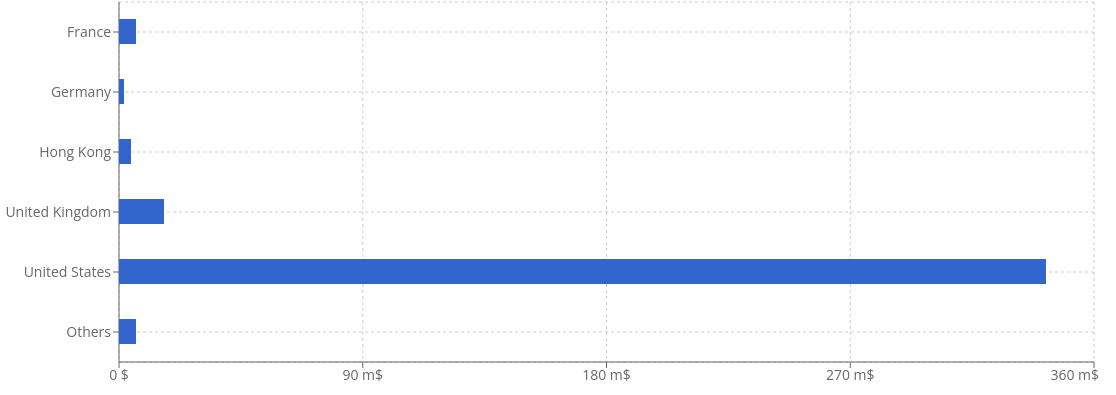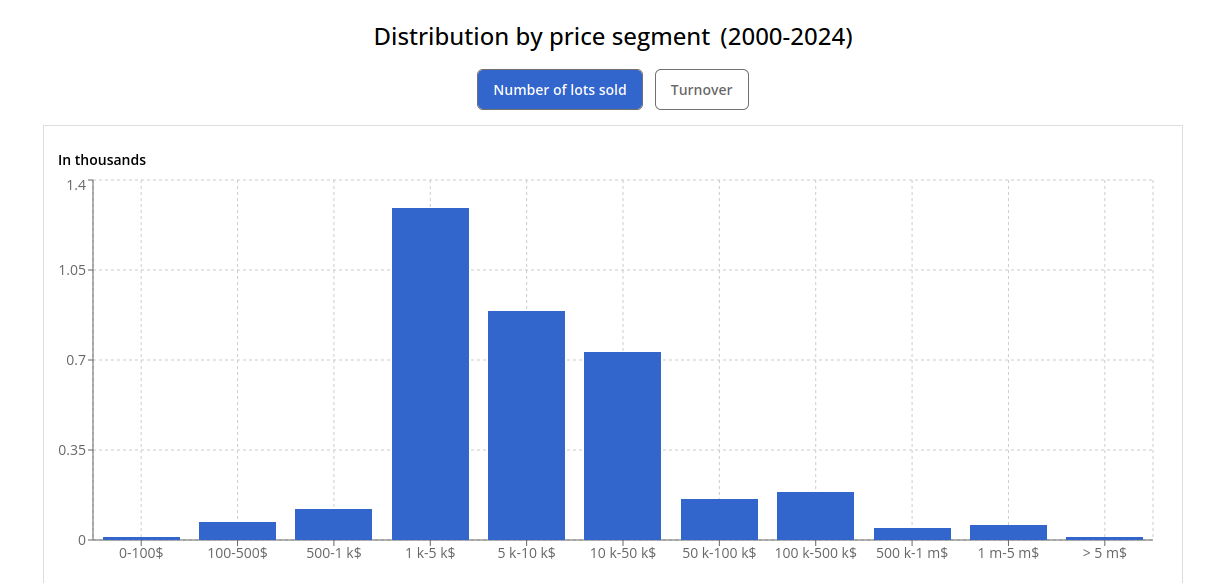Frank Stella… beyond the frame
[16.07.2024]Frank Stella passed away on May 4 last. A pioneer of Minimalist art, his signature is today among the twenty top-selling names on the global art auction market. We take a look back at the unique career of this major figure of the latter half of the 20th century.
During his long artistic career Frank Stella received a great many awards and prizes, far too many to detail here. Likewise for his exhibitions, although some clearly deserve to be highlighted as they were exceptional. For example his work was exhibited twice during his lifetime at the Museum of Modern Art in New York, a museum with which he began to collaborate in his twenties. At the age of 34, in 1970, he became the youngest artist to benefit from a full retrospective at the MoMA. This was an unprecedented privilege for a living artist, who benefited from a second retrospective there in 1987. Since his early and legendary debut in the art world, Frank Stella remained a prodigy until his death in May 2024, at the age 87.
Frank Stella: world ranking at auction

A permanent reinvention
After graduating from Princeton University, Frank STELLA moved to New York and quickly began his career with the “Black Paintings” series (1958-1960). These black paintings made with a decorator’s paint brush are deliberately depersonalized: the lines are due to the width of the brush used, the repetitive shapes. The creator distances himself from any romantic vision of creation, reflecting nothing subjective and rejecting any interpretive dimension: for him, painting was neither poetic, nor symbolic, nor psychologizing. As he himself famously said, what you see is what you see!
The first black canvases marked an important turning point in Post-War art history, while artists like Jackson Pollock and Franz Kline were mainly concerned with the supremacy of gesture. Their success was immediate: four Black Paintings were included in the “Sixteen Americans” exhibition organized by the MoMA in 1959. Shortly after the exhibition, MoMA director Alfred Barr purchased one of them for the museum’s permanent collection. Considered essential to the development of minimal art in the 1960s, but rare, “Black Paintings” are almost impossible to find on the market. One – Point of Pines (1959) – fetched Stella’s auction record at $28 million in May 2019 (Christie’s New York).
Frank Stella: turnover at auction by country (copyright artprice.com)

At 25, Stella had already established himself on the American avant-garde scene after his work was acquired by the MoMA. At 26, he had his first solo exhibition at the Castelli gallery in New York where he presented “Aluminium”, inaugurating his work on “Shaped canvases”, whose contours merge with the geometric shapes represented. The patterns – lines of identical width echoing the outline of the canvases – are part of a strict logic… a rigorous, detached protocol.
The painting became an object in itself. It imposed its presence for what it is, with authority. Sober and minimal, these creations would soon give way to their opposite: maximalist and baroque works. After the asceticism of black or gray paintings, Stella began to use vibrant and acidic colors, making reliefs that came to occupy the space with evermore extravagance. As of the 1980s Stella moved into a completely different artistic universe, making 3D paintings that he refused to call “sculpture” and which he spent the rest of his life reinventing.
In the 1990s, he was one of the first artists to use computers to arrange his shapes and colors and in the 2010s, he created large works in thermoplastic polymer (ABS) whose flexibility allowed great precision with complex shapes, resulting in large-scale organic-futuristic creations. In his eighties, he regenerated his work using the technological tools of his time and he offered, in the form of NFTs, virtual sculptures that can be printed in 3D.
Buying the work of a legend today
Stella is much appreciated by European collectors due to his importance in the 20th century art history on the one hand, but also thanks to the work done by his galleries. Gallery owner Lawrence Rubin was the first to organize an exhibition for him in Paris in 1961. Daniel Templon has always supported him. More recently, Ceysson & Bénétière have added his work to their offer, hosting a major Parisian exhibition in 2023 before the one planned at the Panery estate in Pouzilhac (in the Gard region of Southern France) this summer, which will be an opportunity to discover some of his latest works, dated 2014.
Indeed, thanks to the promotional work by French galleries, works by Frank Stella have found their way into French collections, both public and private, but they hardly ever appear at auction in France. If you want to buy one, better go to the United States. The oldest and largest sell for several million dollars, while some very limited edition compositions are available for around $30,000. On the advice of his dealers, the artist was able to adapt his work to make it more accessible and satisfy a larger clientele. This is why most of the lots sold at auction are prints (80%), roughly 200 transactions per year, at prices generally between $500 and $15,000, depending on the quality and rarity of the plates.
If you want to place a winning bid on a unique piece without facing too much competition, his work sometimes sells on other markets. Last March, for example, in London, Sotheby’s sold a 1983 composition of imposing size (more than three meters), for $178,600 (Olive (Malta Series #8)). It could have doubled this price had it been offered in New York, especially since it is part of a series of 12 works from 1983 which are pivotal in Stella’s thinking on space in Baroque art and Contemporary art.

‘Pivotal’ works, whether in metal or paper, is what the most seasoned collectors are looking for first and foremost. Stella seems to have had various pivotal moments and works that reflect the evolution of his style fetch good money; in 2019 a small drawing entitled Marquis de Portago sold for $143,750, whereas most of his drawings fetch between $30,000 and $70,000 on average. The small pencil drawing (which doubled its estimate) is a superb work prefiguring the period of his famous “Black Paintings”, an essential phase of creation which triggered the minimalist and geometric path that American abstraction would follow after Abstract Expressionism. Moreover, the Marquis of Portago is dedicated by Stella to Lawrence Rubin, the art dealer who gave him his first European solo show before financing a catalog raisonné of his works. The acquisition of this drawing paying homage to Stella’s first supporter was tantamount to purchasing a small piece of art history, the beginnings of an insatiable researcher who produced a vast and always disconcerting work, driven by the conviction that the field of possibilities is infinite, and that creation is an essential activity for staying young at heart.
Artmarket article published in our partner magazine Gestion de Fortune (France)




 32.1
32.1
